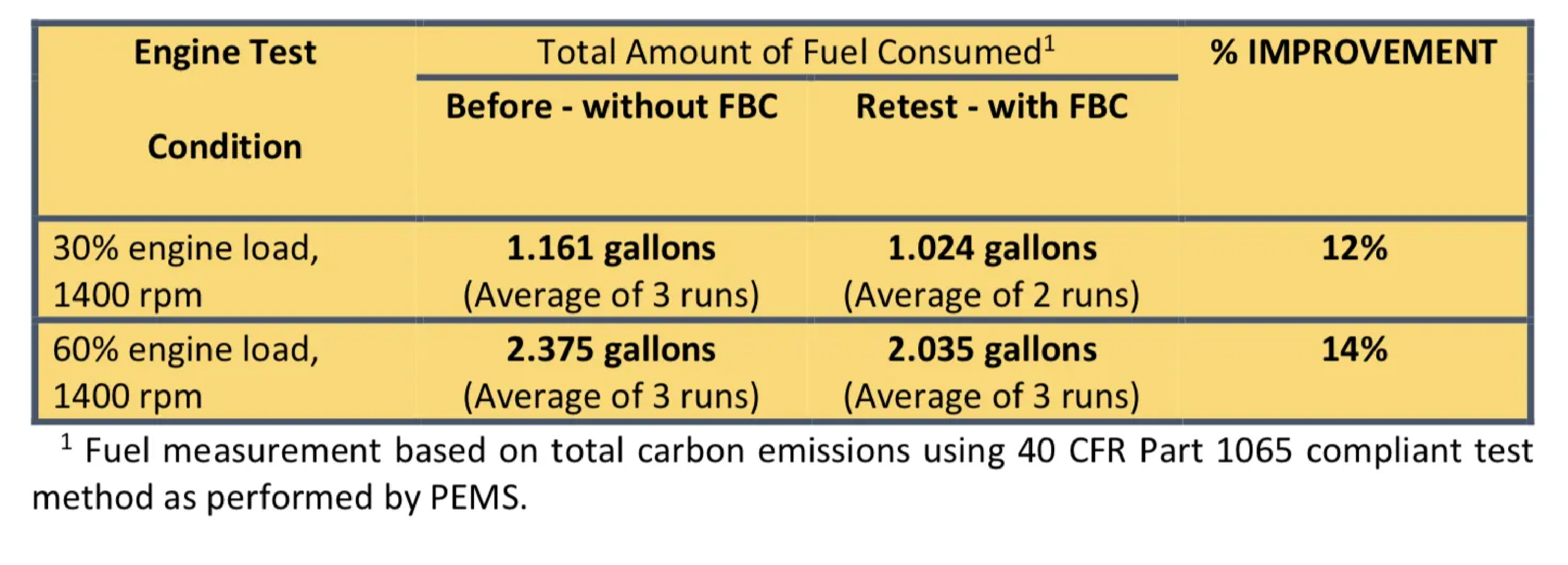DYNO TESt RESULTS
Rolling dynamometer engine testing for fuel economy under controlled conditions. We are pleased to share the results:
*FBC = Fuel Borne Catalyst

Test results used with permission from Better Diesel FBC, Inc.
The test engine: 2016 Cummins ISX CM2350 set at 550 hp. The fuel treatment began April 2018 with 272,476 miles on the odometer and concluded in late July with 308,218 miles. The ECM had the standard factory program. The truck is a Kenworth W900 “SuperCab”.
The engine test facility: We (Pittsburgh Power) performed the test for fuel economy using our Taylor chassis dynamometer. Our dyno uses a water brake to control the engine at a fixed rpm and percent load (torque). We also measured the exhaust emissions using a Portable Emissions Measurement System manufactured by Sensors Inc. These emissions measurements were converted to fuel consumption estimates using EPA compliant methods for certifying engine fuel consumption (40 CFR Part 1065). Dyno testing eliminates any influence of external variables on fuel economy such as wind and rolling resistance, driving style, and terrain.
After the baseline testing was complete, the same engine began use of diesel treated with Max Mileage FBC (fuel borne catalyst). The driver noted smoother, quieter engine operation and better pulling power (common feedback from customers). His manually logged baseline MPG was 5.2. The driver noted that fuel mileage gradually increased over the evaluation period. The driver-logged MPG from beginning to end of the 3-month test period was 5.85 MPG. This represents an increase of 13% which included the initial clean-up and conditioning time. The driver-logged MPG for the last 2 months of the test period was 5.94, an increase of 14%. These results are consistent with the dyno results obtained under controlled conditions of rpm and load.
“Return to Baseline” test and repeat: As a check on the driver reported MPG evaluation, we ran a repeat test in which the truck was driven with untreated fuel for ~30,000 miles. This “return to baseline” evaluation began in the fall of 2018 with use of “winter” fuel and lasted for approximately two months. Treatment of the fuel with Max Mileage resumed on Jan. 24, 2019, again using winter fuel, and ended on Mar. 14, 2019. Recorded numbers from the truck owner’s manual fuel log were 2,568 gallons of diesel burned over 14,289 miles driven since he resumed use of treated fuel. That adds up to an estimated fuel economy of 5.5 MPG, significantly higher than the original 4.9 MPG achieved over the previous two-month period. The increase in driver reported fuel economy for this second evaluation was 13%, consistent with previous results obtained with the rolling dynamometer (controlled conditions) and the MPG calculated manually by the owner of the engine from his fuel log.

